Groundhog Day is a comedy movie starring Bill Murray and Andie MacDowell. It’s a story about a weatherman, Phil Connors, who finds himself trapped in a time loop that has him reliving the same day over and over again.
This film takes you on an unforgettable journey of hilarious incidents that keep occurring over and over again. The film is based on the novel of the same name by Phil Connors. This movie is full of humor and very entertaining for everyone.

Contents
- 1 The Storyline of “Groundhog Day.”
- 1.1 Major Themes of the Movie
- 1.2 The Climax of the Movie
- 1.3 Bill Murray’s Character Change Throughout the Film
- 1.4 Is “Groundhog Day” a Comedy or a Drama
- 1.5 Memorable Quotes From the Movie
- 1.6 “Groundhog Day” Box Office Debut
- 1.7 The Story Behind the Movie
- 1.8 Movie Cast and Characters Bill Murray
- 1.9 Ending of Groundhog Day
- 1.10 Overall Reviews Audience Analysis
- 1.11 Critic’s Analysis
The Storyline of “Groundhog Day.”
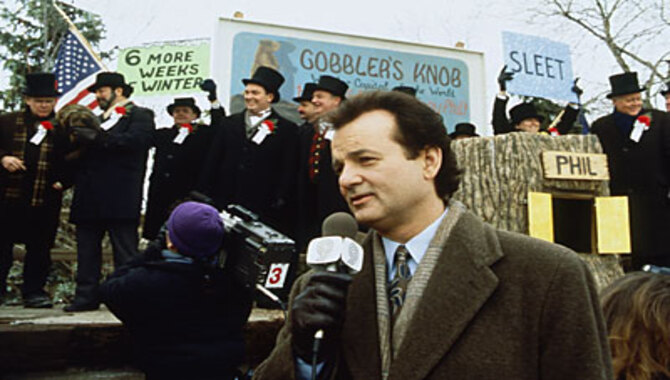
On February 1, Pittsburgh television weatherman Phil Connors promised his Pittsburgh viewers that a looming snowstorm would pass over Western Pennsylvania.
Phil flies to Punxsutawney with his producer Rita Hanson and cameraman Larry for his yearly coverage of the Groundhog Day festivities.
He makes no secret of his disdain for the assignment, the little town, and the “hicks” that reside there, claiming that he will soon be departing for a new career.
On February 2, Phil woke up to Sonny & Cher’s “I Got You Babe” playing on the clock radio at the Cherry Tree Inn. He provides a half-hearted report on Punxsutawney Phil and the celebrations.
Contrary to his forecast, a snowstorm hits the region, stopping all movement out of Punxsutawney, and despite feverishly trying to find a way out, he is forced to spend the night in town.
Phil wakes up the following morning to “I Got You Babe” and the same DJ banter on the radio. Phil feels he is having déjà vu when the previous day’s events replay perfectly. He makes another futile effort to leave town and returns to bed.
When he awakens, it is once again February 2. Phil eventually finds he is stuck in a temporal loop that no one else is aware of. He confides in Rita, who refers him to a neurologist, who refers him to a psychologist, neither of whom can explain his experiences.
Phil gets intoxicated with locals Gus and Ralph before leading cops on a high-speed automobile pursuit before getting captured and imprisoned. Phil awakens the next morning in the Cherry Tree Inn.
Recognizing that there are no repercussions for his acts, Phil began spending loops indulging in binge eating, one-night stands, thievery, and other risky behaviors, using his growing knowledge of the day’s events and town people to manipulate things to his advantage.
He eventually concentrates on courting Rita, utilizing the loops to learn more about her so that he may sleep with her. Rita always rejects Phil’s attempts, especially when he tells her he loves her; Rita claims he doesn’t even know who she is.
Phil rapidly depresses and becomes anxious to find a way out of the cycle. He kills himself in a number of methods, including kidnapping Punxsutawney Phil and driving them both over a cliff. On February 2, he reawakened to “I Got You, Babe.”
Major Themes of the Movie
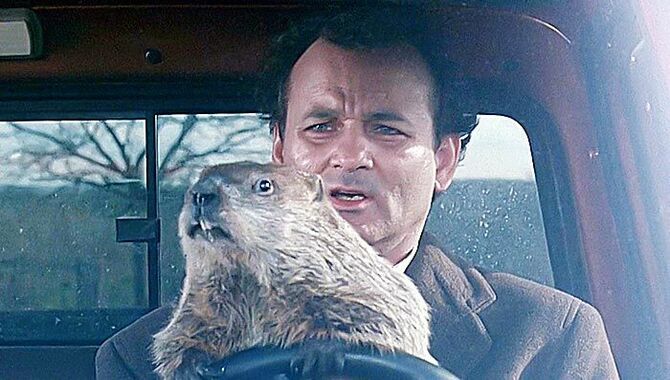
- The movie’s main theme is how we should make our own choices in life and live with regrets instead of just going through the motions because it’s like being scripted by a god or fate.
- It also shows that when you want to change someone else, let them know why they need to change and not vote for their rejections on what you tell them needs to be changed about themselves 2 friends are trapped together for years except for the sexual desires.
When they meet each other in high school, one of them is playing chess as the mood and having a difficult time dealing with it when his godfather passes away, he finds out that if you win at chess 6 times consecutively (all over Ireland), your wishes come true, so he sets up this elaborate plan to do just that, but during his last game there are problems back home which causes him to lose the game on purpose.
The Climax of the Movie

- The climax of the movie is when Phil wakes up from his coma and realizes that he has repeated the same day over and over again forever, even though he wants to change it.
- Some memorable quotes from the movie include: “You Wake Up In A Strange Room Every Day And You Just Have To Get Out” (Bill Murray’s character). “The Groundhog Day Phenomenon: Somebody Tell Me What It Means”
Bill Murray’s Character Change Throughout the Film
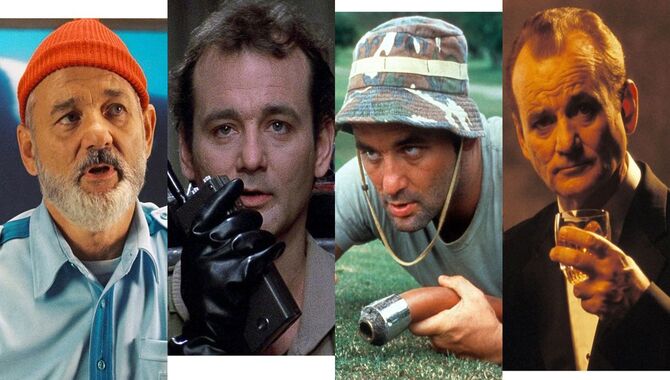
Bill Murray’s character changes throughout the film by first hating Phil because he thinks that he is a jerk who can’t control his life, but eventually, they become friends.
When Phil teaches him how to control his life by confronting the positives and negatives of being famous, everyone is ecstatic that he won’t be “stuck” anymore.
Bill Murray’s character realizes the reason why he has been pulled into this loop when Grace meets up with him on set directing what appears to be the last scene because her co-star is sick. Hence, she sends it over to ‘her boss’ for a pickup, but instead, the whole film was just the same day.
Is “Groundhog Day” a Comedy or a Drama

It’s a suspense drama, so it most definitely counts as a comedy since when Phil wakes up from the coma, he is initially scared of Grace then realizes that his whole life has become this TV show and becomes angry with her. Still, they talk to each other and realize how happy they are; funny stuff happens after all.
“Groundhog Day” was adapted from “Heaven Can Wait.” Which inspired director Harold Ramis’ script? Ramis’ “Heaven Can Wait” is a semi-autobiographical story about an actor who becomes convinced that his death at the hands of assassins has been televised.
Memorable Quotes From the Movie
- “You know what they say: You can’t win if you don’t play.” – Phil Connors
- “Let’s go to a bar. You can fight against life and death there.” – Phil Connors
- “I liked the fact that people were looking up at us instead of down on us today!”-“No one is more deluded than I am, Mrs. Westenas (awkward silence).
- “Oh yeah? Then I guess it’s true!” – Phil Connors
- “I’m only waiting for the election. By then I’ll be president.”-Bill Murray.
“Groundhog Day” Box Office Debut
Groundhog Day was released in 1,640 cinemas throughout North America on February 12, 1993. The picture grossed $12.5 million, or $7,632 per theater.
Due to the President’s Day holiday on Monday, the film benefited from a four-day weekend. This brought the weekend total to $14.6 million, raising the theater average to $8,934.
This was the second-largest opening for a winter picture, behind only Wayne’s World ($18 million) from the previous year. Groundhog Day was the weekend’s top picture, beating out romantic drama Somersby ($9.9 million) and adventure comedy Homeward Bound:
The Incredible Journey ($8.1 million), both of which were in their second week of release. The film’s screenings were almost entirely sold out. Sixty-five percent of those questioned indicated they would “certainly recommend” it.
The picture remained at the top of the box office in its second weekend, earning an additional $9.3 million. It fell to second place with $7.6 million in its third weekend, after the new murder thriller Falling Down ($8.7 million).
Groundhog Day continued in the top ten grossing pictures for another four weeks, generating $57.6 million. It spent the rest of its run outside the top 10, with the exception of two small resurgences—one over the long Easter weekend in mid-April when it went to number 2, and another around 15 weeks later, when it rose to number 7 after being released in low-cost ticket theaters.
Outside of North America, the picture is believed to have made an additional $34.2 million, for a total global gross of $105 million, making it the 19th highest-grossing film of the year.
The Story Behind the Movie
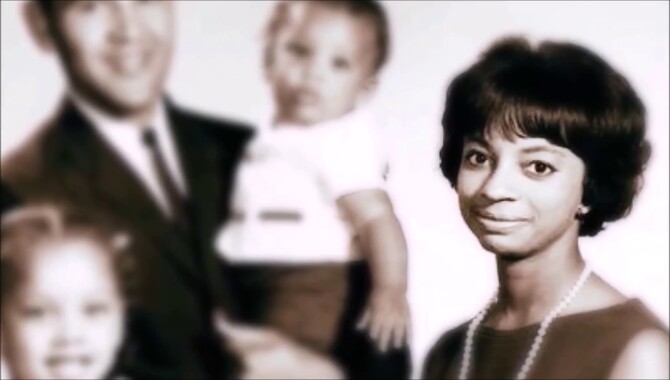
In 1991, looking for an original script idea he could use in the development of Groundhog Day as a future film project, director Harold Ramis traveled to Punxsutawney. He quickly came up with his own material and then rewrote it based on what he experienced there.
On February 2 that year (the exact day used in the finished film), Ramis got a ride into Harrisburg after attending a bar called An Olde New York in Punxsutawney, at the exact moment a total eclipse was about to begin. He then took his friend and future Groundhog Day co-star Bill Murray out for another drink after returning home.
They came up with an outline that Ramis used in writing Felicity (later renamed “Groundhog Day”) while he was living on Castle Street in Columbia, Pennsylvania.
The following April 31, 1990, saw the film’s release on video and its re-release in theaters with minor changes to the script. The original theatrical release also saw a short time frame of February 2, 1991, to increase audience interest during the Summer and Holiday seasons before it was released once again on home media.
Movie Cast and Characters Bill Murray

Murray starred as Phil Connors, a television weatherman living in Punxsutawney who finds out he will have to relive the same day six times. Murray was not often considered for screen villain roles at this time and had yet to work with Ramis directly on any projects.
He would later narrate Felicity starring his Phil character before Groundhog Day’s release fifteen years later, which followed around the events of Cheers.
Andie MacDowell
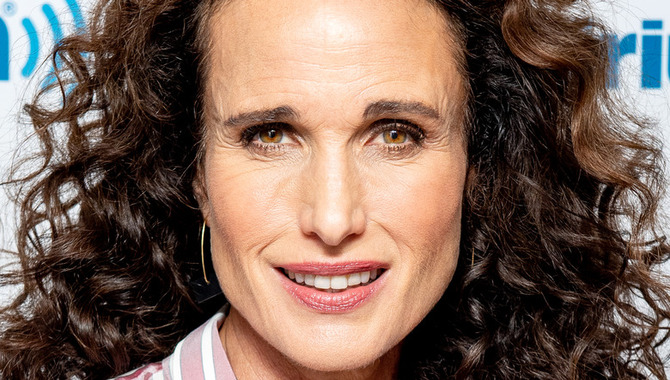
MacDowell played Rita, Phil’s girlfriend and love interest. Ramis had originally wanted potential cast members, including Christopher Lloyd, Martin Short, Jerry Stiller, and James Woods, but none were available
Harold Ramis
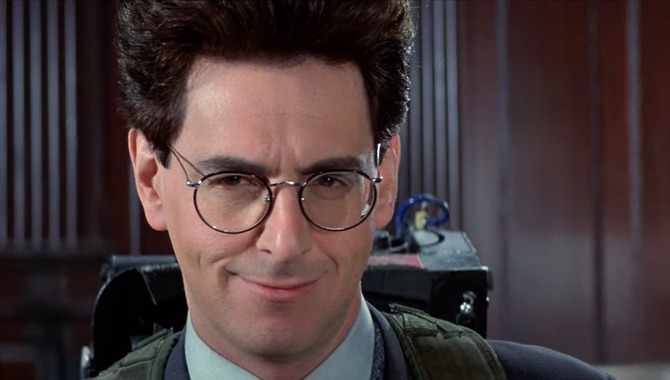
Ramis starred as the film’s main antagonist, Sam Steege. Ramis had often played “bad guy” roles in his past work and felt this was a perfect opportunity to show off his comedic talents.
Chris Elliott
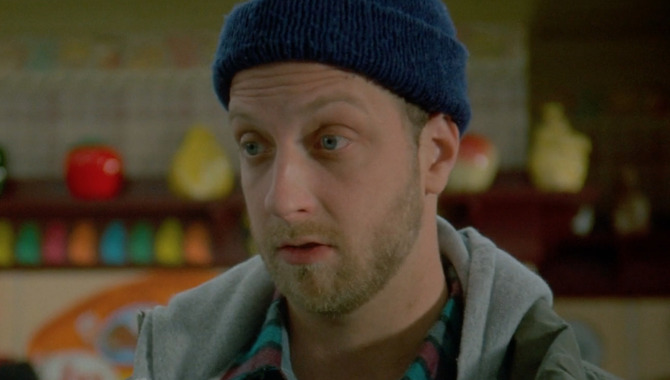
Elliott was one of Ramis’s two favorite actors and starred in The Chipmunk Adventure on Broadway. He originally turned down the role of Chad.
Still, He agreed a short time later after realizing what it meant to be trapped in Punxsutawney for six years like his character was supposed to be, which helped get him into the right mindset for quickly accepting the part of Charlie Brown.
Stephen Tobolowsky

Tobolowsky was named after four directors who had passed away before; John Cassavetes, Robert Wise, Ted Post and Andrei Tarkovsky.
The role of Groundhog Day’s Phil Connors’ father William Punxsutawney happened to be a dream role for Tobolowsky as he reasoned that if one were trapped in the same day over 24 hours, it would take 100 years just to watch all six of “The Princess Bride” in a single theater.
Ending of Groundhog Day

He ultimately attempts to explain his condition to Rita again, this time successfully predicting events based on his extensive knowledge of the day.
Rita spends the remainder of that day’s loop with Phil, persuading him that the loops are a gift rather than a burden. As they lie in bed together at night, Phil knows that his emotions for Rita have grown genuine.
On February 2, he awakened alone. Phil resolves to utilize his loop knowledge to better himself and others: he rescues people from fatal accidents and disasters, and he learns to play the piano, carve ice, and speak French. Regardless of all his attempts, he cannot save the life of a destitute elderly man.
During one iteration of the loop, Phil speaks on Groundhog Day festivities such eloquently that other news crews stop working on listening to him, stunning Rita.
Phil continues to assist the folks of Punxsutawney. Rita watches Phil’s exceptional piano-playing abilities that night as the loving townspeople regale her with tales of his good acts.
Rita successfully buys for him at a charity bachelor auction, impressed by his apparent overnight change. Phil carves an ice sculpture of Rita and tells her that no matter what happens, even if he is condemned to wake up alone every morning for the rest of his life, he is finally happy because he loves her. They go back to Phil’s room.
The following morning, Phil wakes up to “I Got You, Babe,” but Rita is still in bed with him, and the radio chatter has changed; it is now February 3. Phil tells Rita that he wants to live with her in Punxsutawney.
Overall Reviews Audience Analysis

“Groundhog Day” was generally well-received by audiences. The review aggregator website Rotten Tomatoes reports that 87% of audiences have given the film a positive review, with an average rating of 7.5/10.
In his book “The Greatest Films of All Time,” Andrew Sarris wrote: A high-spirited and clever comedy about a man who is condemned to repeat one endlessly dreary day, “GROUNDHOG DAY” is one of the few films with a modicum of social and psychological realism.
Though predictable, “GROUNDHOG DAY” nevertheless offers several enlivening surprises. In its final analysis, it confirms Bill Murray’s promise as an actor: he will always be in safe hands when he appears under the direction of Ramis or Shrum.”
Critic’s Analysis
“Groundhog Day” has garnered a near-perfect 93/100 on Metacritic’s review aggregate, indicating “universal acclaim.”
Judy Channon cited Groundhog Day as one of the Best Films in 1999 Oxford University Press published study “Diversity and Genre.”
Rotten Tomatoes user critics gave it an approval rating that peaked 4.8 out of 5, and they said: A spectacular comedy masterpiece, one there aren’t many people who can’t say that have seen. A wry and witty take on fate, past and future.”
Critic’s analysis; Roger Ebert gave “Groundhog Day” thumbs-up of 4 out of 4: “It is one of the few films I’ve seen which shows how a single image or moment in time can seize your attention from beginning to end.
Conclusion
Groundhog Day is a 1993 American comedy film written, produced and directed by Harold Ramis. The film stars Bill Murray, Andie MacDowell, Chris Elliott, and Danny Glover. The film was released in the United States on February 2, 1993, by Columbia Pictures. The film went on to gross $100,938,089. In addition,
the movie was nominated for seven Academy Awards: Best Actor in a Supporting Role (Chris Cooper), Art Direction, Sound Mixing, Sound Editing, Visual Effects, and won an Independent Spirit Award for outstanding achievement in Film “Bill Murray is awesome as Phil Connors.”
FAQs
1.Is Groundhog Day a Great Movie?
Ans: Yes. It is considered to be one of the Best Movies Ever Made, and a 90s Classic too! I just started watching it this evening & only got two hours into it… Is there any kind of part 2? If so, how can I find out more about what happens in the movie from here on…?
Harold Ramis said he had thought up another half-hour or so worth shooting someday after completing “Groundhog Day”, but nothing came of it. I heard there was going to be a sequel but… It never materialized.
2.Why Is Groundhog Day a Brilliant Moral Fable?
Ans: Groundhog Day is a brilliant moral fable because it teaches the importance of perspective and how to learn from your mistakes. Phil, the protagonist, is stuck in a cycle of day-to-day life where he repeats the same mistakes over and over again.
He doesn’t understand why he keeps making the same mistakes until he realizes that his perspective is what’s keeping him trapped. Each time Phil wakes up on Groundhog Day, he has to make a choice between two possible futures: one where he continues making the same mistakes, and another where he learns from his past and changes his behavior for the better.
3.What Is Groundhog Day and Why Is It So Famous?
Ans: Groundhog Day is a famous comedy film that was released in 1993. The story follows Phil Connors, a weatherman who is forced to live the same day over and over again until he learns something about himself.
The movie became so popular because it is funny and relatable. It is also a great example of how our lives are constantly changing but we never really know what will happen next.
4.Why Does the Main Character Always Keep Losing His Job?
Ans: There are a few possible reasons why the main character keeps losing his job. One reason could be that he is not qualified for the position he is applying for. Another reason could be that he does not put in enough effort or takes too long to find a new job.
The main character also might not be meeting the company’s expectations, which can lead to him being fired. In some cases, companies might choose to downsize or reorganize their departments, which can also lead to layoffs.
5.Who Was Bill Murray’s Character in This Movie, and Why Did He Have Such a Negative Outlook on Life?
Ans: Bill Murray’s character in the movie, Ghostbusters, is named Peter Venkman. He is a negative and cynical individual who has lost all hope in life. His outlook on life is based on his experiences with the paranormal and the supernatural.



Leave a Reply